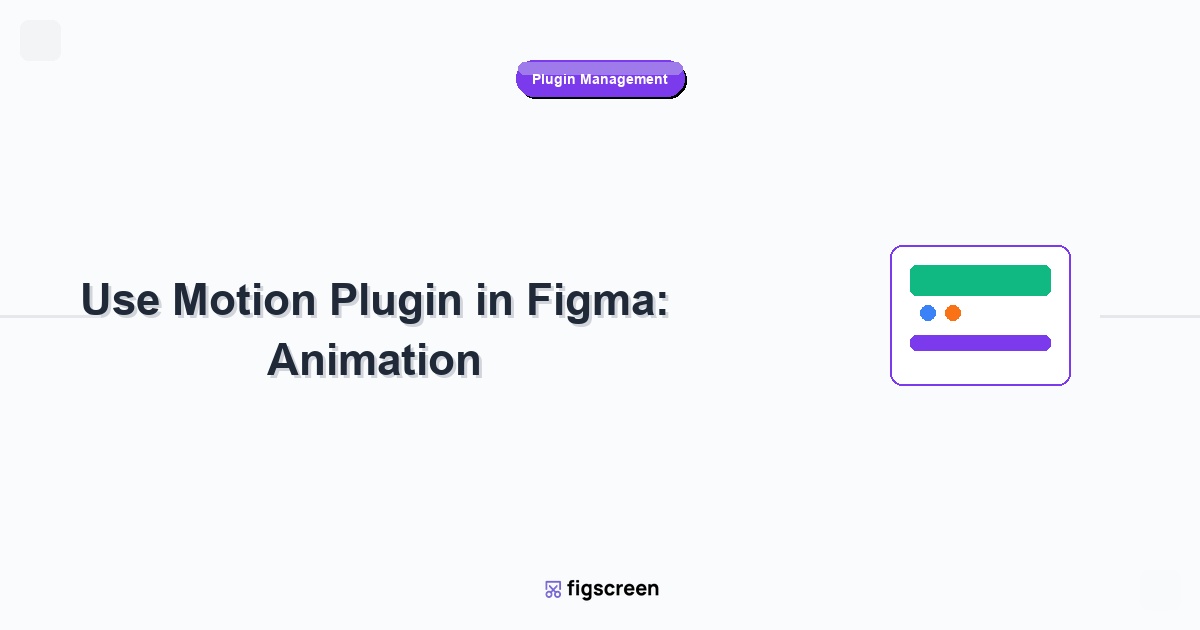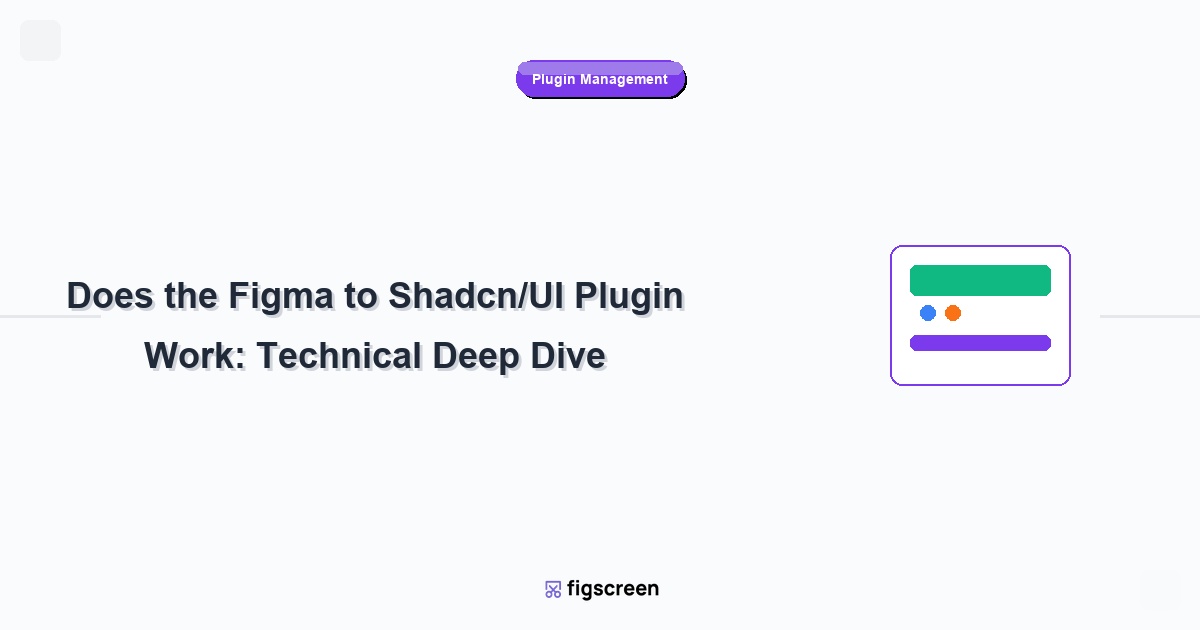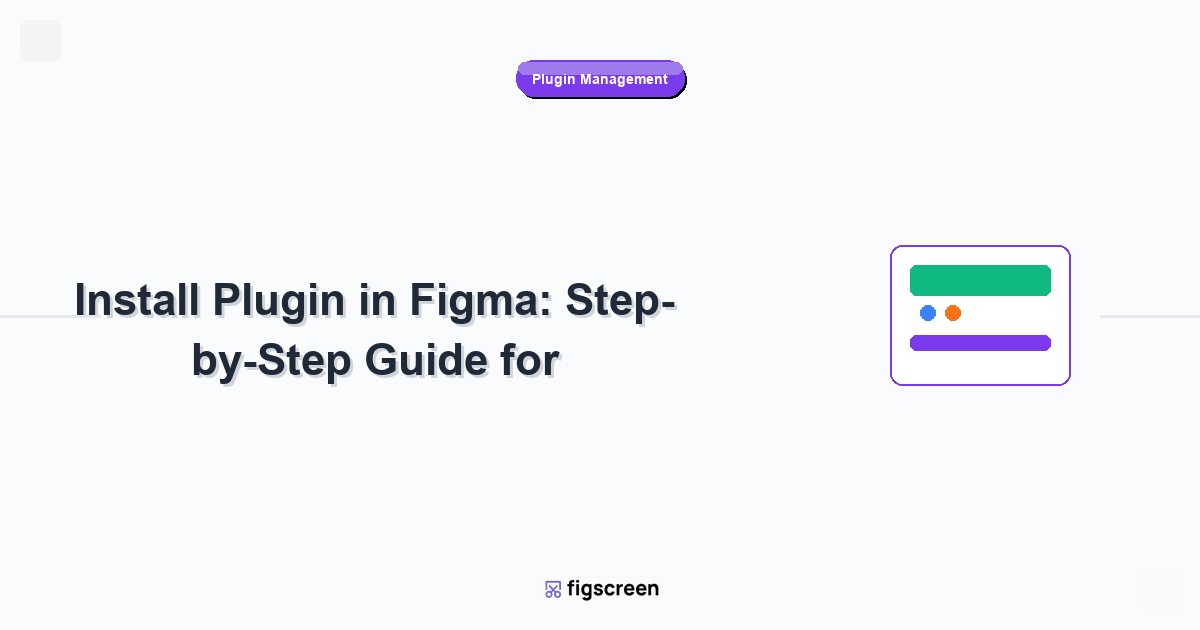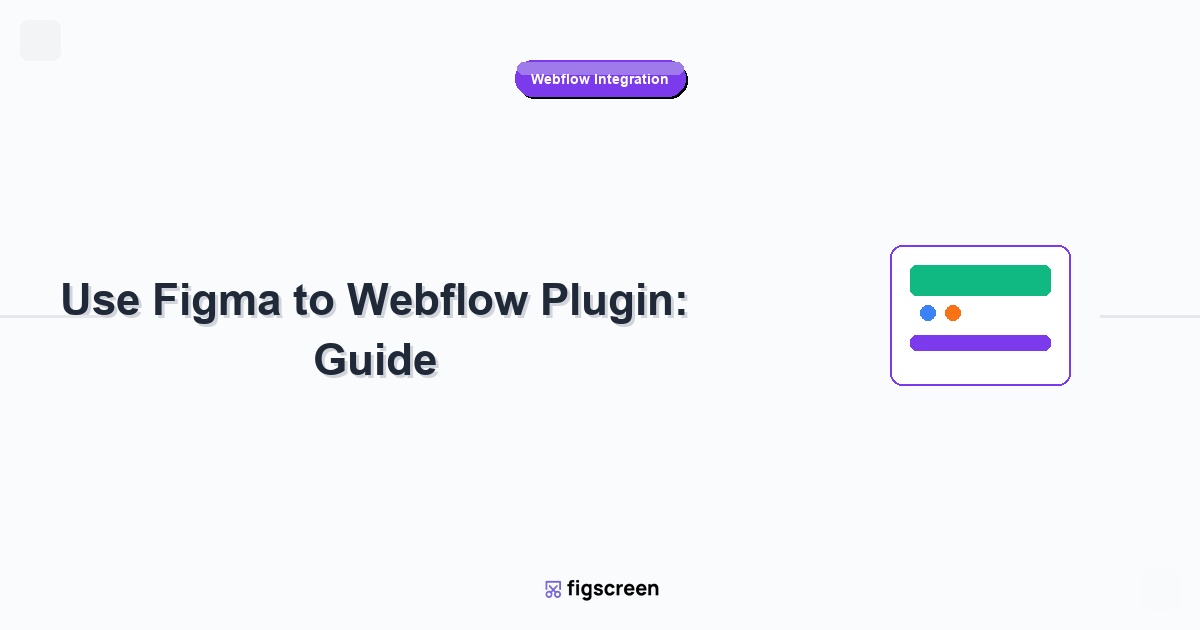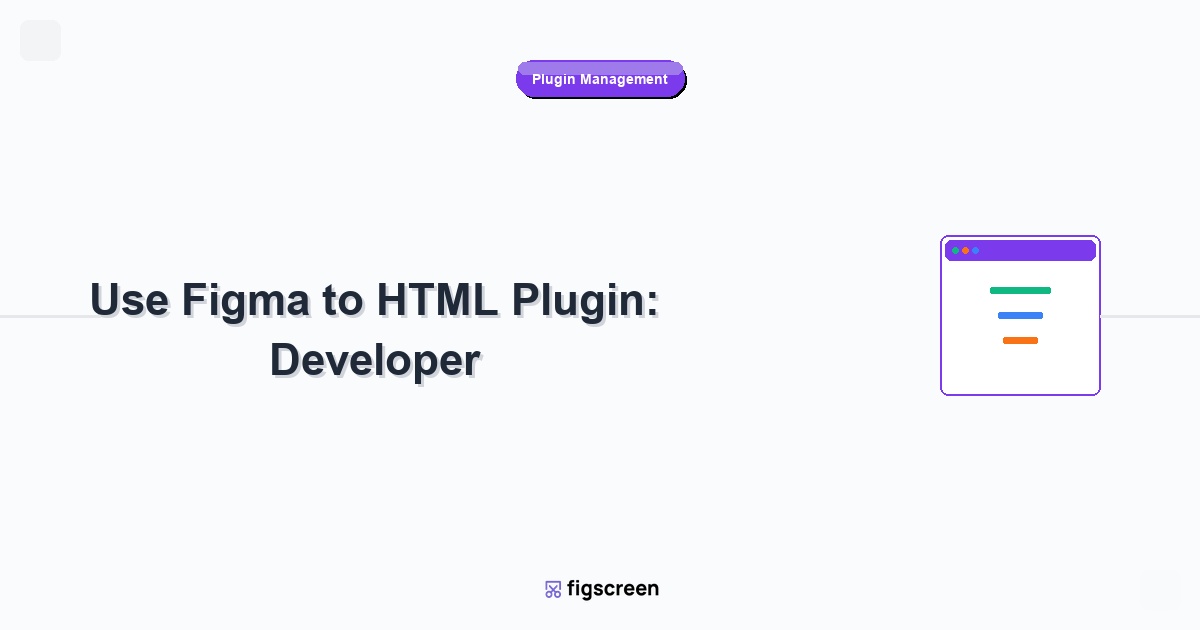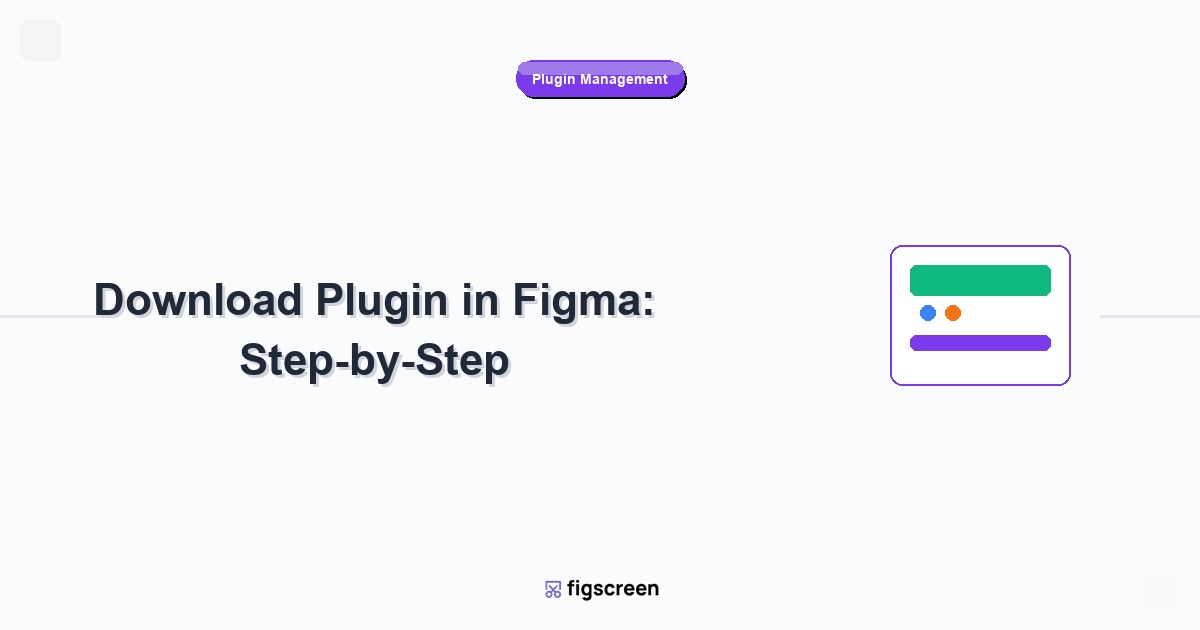Motion design has become essential for creating engaging user interfaces that guide attention, provide feedback, and enhance user experience. Motion plugins in Figma allow designers to create sophisticated animations without leaving their design environment. This comprehensive guide covers the best motion plugins available and how to use them effectively to bring your designs to life.
Understanding Motion Design in Figma
The Role of Motion in UI Design
Motion serves multiple purposes in digital interfaces:
- Visual Feedback – Confirm user actions and system responses
- Attention Direction – Guide users to important elements
- State Transitions – Smooth changes between interface states
- Storytelling – Communicate brand personality and narrative
- Usability Enhancement – Make interfaces more intuitive and engaging
Types of Motion Plugins Available
Different plugins specialize in various animation approaches:
- Timeline-Based Plugins – Traditional animation with keyframes
- Code-Based Motion – Generate CSS or JavaScript animations
- Interactive Prototyping – Create responsive user interactions
- Micro-Animation Tools – Focus on subtle interface animations
Popular Motion Plugins for Figma
LottieFiles – Industry Standard Animation
LottieFiles is the most comprehensive motion plugin for Figma:
- Vector Animations – Create scalable, lightweight animations
- Cross-Platform Export – Works on web, mobile, and desktop
- Interactive Elements – Add hover states and click animations
- Massive Library – Access thousands of pre-made animations
- Timeline Control – Precise animation timing and easing
Figmotion – Native Figma Animation
Designed specifically for Figma workflows:
- Seamless Integration – Works directly with Figma components
- Smart Auto-Animation – Automatically generates motion between frames
- Component-Based – Animate component properties and variants
- Easy Export – Generate CSS animations and code
ProtoPie Connect – Advanced Interaction
For complex interactive prototypes:
- Sensor Integration – Use device sensors in prototypes
- Complex Logic – Create conditional animations and interactions
- Real Data – Connect animations to live data sources
- Multi-Device Sync – Synchronize animations across devices
Installing Motion Plugins
Plugin Installation Process
Install motion plugins through Figma’s Community tab:
- Open Community Tab – Click “Community” in top navigation
- Search for Motion Plugins – Use keywords like “animation,” “motion,” or specific plugin names
- Filter by Plugins – Click “Plugins” to show only plugin results
- Review Plugin Details – Check ratings, reviews, and feature descriptions
- Install Selected Plugins – Click “Install” for chosen motion plugins
- Verify Installation – Confirm plugins appear in your Actions menu
Recommended Motion Plugin Setup
Essential plugins for comprehensive motion design:
- Primary: LottieFiles – For professional animation creation
- Secondary: Figmotion – For quick Figma-native animations
- Specialized: ProtoPie Connect – For complex interactive prototypes
- Utility: Easings – For advanced easing curve management
Creating Your First Motion Animation
Basic Animation Workflow
Start with a simple animation using LottieFiles:
- Prepare Your Design – Create the elements you want to animate
- Open LottieFiles Plugin – Launch from Actions > Plugins menu
- Select Elements – Choose objects to include in animation
- Set Keyframes – Define start and end positions/properties
- Adjust Timing – Set animation duration and easing
- Preview Animation – Test your animation within the plugin
- Export or Share – Generate final animation file
Understanding Animation Properties
Key properties you can animate in motion plugins:
- Position (X, Y) – Move objects across the canvas
- Scale – Resize elements dynamically
- Rotation – Rotate elements around their center or custom pivot
- Opacity – Fade elements in and out
- Color – Transition between different colors
- Path Animation – Move objects along custom paths
Advanced Motion Design Techniques
Animation Principles for UI Design
Apply traditional animation principles to digital interfaces:
- Timing and Spacing – Control rhythm and flow of animations
- Easing and Acceleration – Create natural, believable motion
- Anticipation – Prepare users for upcoming changes
- Follow Through – Complete motion with secondary animations
- Overlapping Action – Stagger animations for realistic movement
Creating Smooth Transitions
Techniques for professional-quality transitions:
- Plan Animation Flow – Map out the sequence of movements
- Use Appropriate Easing – Choose easing curves that match the interaction
- Maintain Consistency – Use consistent timing and easing across similar animations
- Consider Performance – Optimize animations for smooth playback
- Test Across Devices – Ensure animations work on different screen sizes
Working with Timeline-Based Animation
Understanding Animation Timelines
Master timeline controls in motion plugins:
- Keyframe Management – Set and adjust key animation points
- Timeline Scrubbing – Preview animations at different time points
- Layer Organization – Manage multiple animated elements
- Timing Adjustment – Fine-tune animation duration and pacing
Advanced Timeline Techniques
Professional animation workflow strategies:
- Animation Layers – Separate different types of motion
- Nested Animations – Create complex multi-level animations
- Loop Management – Design seamless looping animations
- Conditional Logic – Create animations that respond to user input
Interactive Motion Design
Hover State Animations
Create engaging hover effects with motion plugins:
- Design Initial State – Create the default appearance of your element
- Design Hover State – Define how the element should look on hover
- Set Transition Properties – Define animation between states
- Configure Timing – Set appropriate hover and exit durations
- Test Interaction – Preview hover behavior in plugin
Click and Touch Animations
Design responsive animations for user interactions:
- Button Press Effects – Visual feedback for button interactions
- Form Field Focus – Animations for input field interactions
- Loading States – Animated feedback during loading processes
- Success/Error States – Visual confirmation of user actions
Animation Performance Optimization
Creating Efficient Animations
Optimize animations for smooth performance:
- Use Transform Properties – Animate transform properties (translate, scale, rotate) for better performance
- Avoid Layout Animations – Minimize animations that trigger layout changes
- Optimize Frame Rates – Choose appropriate frame rates for different animation types
- Reduce Complexity – Simplify animations without losing visual impact
File Size Management
Keep animation files lightweight:
- Vector Optimization – Simplify vector paths and shapes
- Color Palette Reduction – Use limited color palettes where possible
- Duration Optimization – Keep animations concise and purposeful
- Compression Settings – Use appropriate export settings for target platforms
Exporting and Implementing Animations
Export Formats and Options
Choose the right export format for your use case:
- Lottie JSON – Best for web and mobile applications
- CSS Animations – For simple web-based animations
- GIF – For email and social media (with limitations)
- Video (MP4, WebM) – For presentations and demos
- After Effects – For further editing in professional software
Implementation Considerations
Prepare animations for development implementation:
- Documentation – Provide clear animation specifications
- Fallback Options – Plan for reduced motion preferences
- Performance Testing – Test animations on target devices
- Progressive Enhancement – Ensure core functionality works without animations
Collaboration and Handoff
Designer-Developer Collaboration
Streamline animation handoff process:
- Create Animation Specs – Document timing, easing, and trigger conditions
- Provide Reference Files – Share working animation files with developers
- Establish Naming Conventions – Use consistent naming for animation elements
- Test Implementation – Review developer implementation against design intent
Team Animation Guidelines
Establish consistent motion design standards:
- Animation Library – Create reusable animation components
- Timing Standards – Define standard durations for different interaction types
- Easing Curves – Establish brand-appropriate easing preferences
- Performance Budgets – Set limits on animation complexity and file sizes
Troubleshooting Common Motion Plugin Issues
Animation Playback Problems
Resolve common animation issues:
- Choppy Playback – Reduce complexity or lower frame rate
- Elements Not Animating – Check layer selection and keyframe placement
- Timing Issues – Verify duration settings and easing curves
- Export Problems – Check export settings and file format compatibility
Plugin Performance Issues
Optimize plugin performance:
- Close Unused Plugins – Don’t keep multiple motion plugins open simultaneously
- Reduce File Complexity – Work with simpler designs for complex animations
- Clear Plugin Cache – Reset plugin data if experiencing issues
- Update Plugins – Keep motion plugins updated to latest versions
Advanced Motion Design Workflows
Component-Based Animation Systems
Create scalable animation systems:
- Design Animated Components – Build reusable animated elements
- Define Animation Variants – Create different animation states
- Document Usage Guidelines – Specify when and how to use each animation
- Test Across Contexts – Verify animations work in different design contexts
Motion Design Systems
Integrate motion into your design system:
- Animation Tokens – Define reusable animation properties
- Motion Principles – Establish brand-specific motion guidelines
- Component Libraries – Include animated components in design libraries
- Documentation – Provide clear motion usage guidelines
Future of Motion Design in Figma
Emerging Technologies
Stay current with motion design evolution:
- AI-Assisted Animation – Tools that help generate motion automatically
- Real-Time Collaboration – Live animation editing with team members
- Advanced Physics – More realistic motion simulation
- VR/AR Integration – Motion design for immersive experiences
Best Practices for Future-Proofing
Prepare for motion design evolution:
- Learn Fundamental Principles – Master core animation principles
- Stay Platform-Agnostic – Create animations that work across platforms
- Embrace New Tools – Experiment with emerging motion plugins
- Build Flexible Systems – Create animation systems that can evolve
Conclusion
Motion plugins in Figma open up powerful possibilities for creating engaging, professional animations that enhance user experience and bring designs to life. By mastering the tools and techniques covered in this guide, you’ll be able to create sophisticated motion designs that communicate effectively and delight users.
Remember that effective motion design is about purposeful animation that serves the user experience. Start with simple animations, master the fundamentals, and gradually build more complex motion systems as your skills develop. The key is consistent practice and thoughtful application of motion principles to real design challenges.
Enhance Your Motion Design Workflow
While motion plugins bring your designs to life, Figscreen provides the real-world reference images that inspire great motion design. Capture animated websites and interfaces for motion inspiration.
